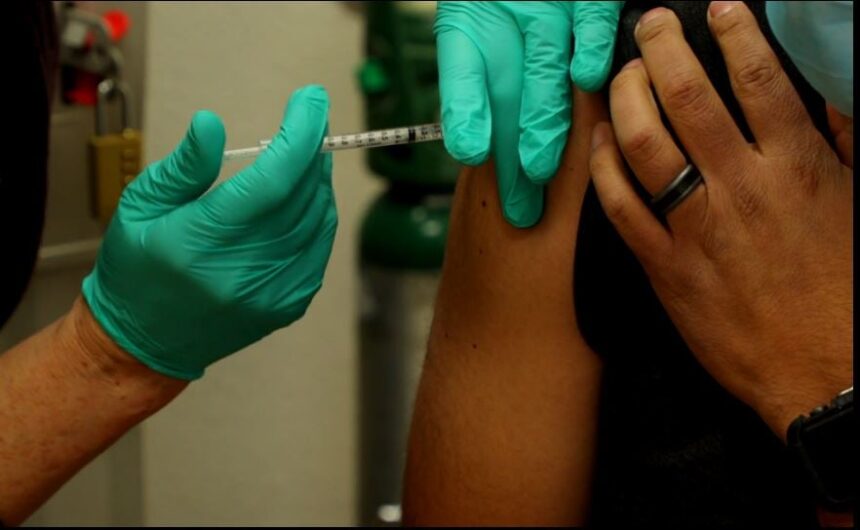State considers shakeup to COVID-19 vaccine plan
(KION)
California's current COVID-19 vaccination plan could be in for a major change, potentially impacting the order of who gets the vaccine.
Sources tell KION that the state is discussing prioritizing age, instead of age and occupation. After the age 75+ and age 65+ groups, people with high-risk medical conditions could also be prioritized. The plans have not been finalized and the state has not made an announcement.
Currently, people age 65 and older are next in line for the vaccine as part of Phase 1B, followed by employment sectors with a higher risk of workplace exposure, including education and childcare, and food and agriculture.
Santa Cruz County Health Officer Dr. Gail Newel says the potential change was discussed at a Tuesday meeting with other California health officers and directors. They were told a final framework would be released by Governor Gavin Newsom on Thursday, but the state is now receiving pushback from the delayed occupation groups.
In a statement to KION, Darrel Ng, the Senior Communications Advisor for California's COVID-19 Vaccine Task Force, writes "we are always seeking input from community groups about how to distribute vaccines equitably and efficiently. There's nothing to announce at this point."
One day after the health officers met was the next California Community Vaccine Advisory Committee meeting. It was announced that the Drafting Guidelines Workgroup is considering a move to age-based priority, acknowledging the difficulties of the current plan, which prioritizes groups based on a number of factors - societal impact, equity and occupational exposure.
The consideration of a change to the state's vaccine rollout is due to the limited supply of doses, keeping a more simple and consistent plan, and prioritizing groups most impacted in hospitalizations and deaths.
According to state figures, people aged 65 and older make up 11 percent of California's COVID-19 cases, but 75 percent of coronavirus-related deaths.
"I think the Drafting Guidelines Workgroup, despite a lot of the work that they have put in over time to these tiers and sectors, kind of recognize the issues they are seeing on the ground trying to administer the vaccine, and supported this idea of considering how to shift even more on the age," State Epidemiologist Dr. Erica Pan said.
In a Friday press conference with local reporters, Dr. Newel said "these folks [are] most likely to take up hospital beds and use ICU beds. We want to make sure those beds are available for something non-COVID related like car accidents or heart attacks. [It is] important we have that capacity preserved. From that point of view that makes sense, but we know this is difficult for occupations."
California is still working through Phase 1A, which includes healthcare workers and long-term care residents. Despite numbers increasing recently, California still ranks near the bottom of U.S. states for the speed of their vaccine rollout.
According to the CDC, California ranks 44th for the number of COVID-19 vaccines doses administered per 100,000 people, despite ranking 21st for how many doses per 100,000 people they've received. However, as California finishes Phase 1A and moves into Phase 1B, state and local health officials say the biggest barrier is the limited, national vaccine supply.
A worry is future occupation-based phases could be a barrier to a faster vaccine effort.
"Thinking about where and how we can have the most impact, but also respond to some of the feedback we are having in this setting with very little vaccine for a huge state like this, how we can have consistency across the state, Dr. Pan said. "We have been hearing a lot about confusion, if certain places are moving more quickly than others, and how to operationalize different occupations and how do you prove that when you show up to a clinic, and how we can make sure we are not wasting any vaccine, and getting into arms before it expires."
In Wednesday's vaccine committee meeting, it was announced that California is only receiving 400,000 to 500,000 vaccine doses a week. At that rate, the state says, it could take 20-22 weeks just to finish vaccinating the 65+ age group.
Salinas Valley Memorial Healthcare System (SVMHS) spokesperson Karina Rusk says they, along with two other Monterey County providers, Community Hospital of the Monterey Peninsula (CHOMP) and Natividad, are offering their support in Monterey County, helping administer the vaccine "on a wider distribution plan."
SVMHS is using their clinic system (SVMH) to vaccinate healthcare workers who are not in the acute hospital setting, but the eligible group will expand in the next couple weeks. SVMHS will begin notifying patients in their system who are, first, age 75 and older, then 65+, and later, people with high-risk medical conditions.
This is a developing story.



